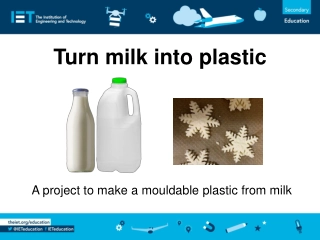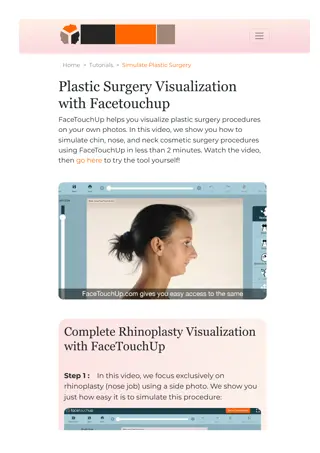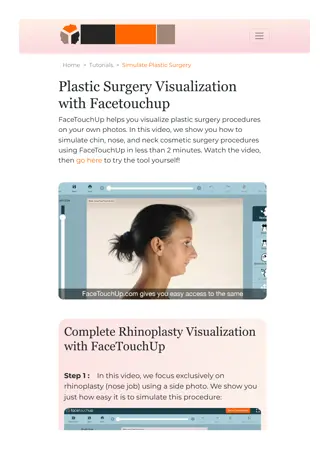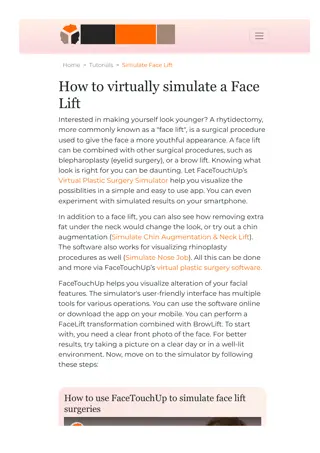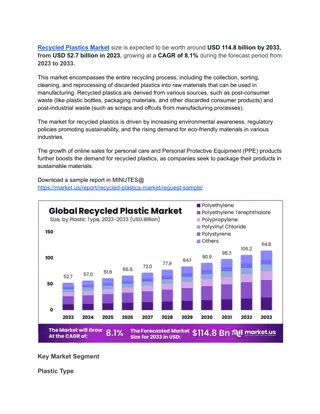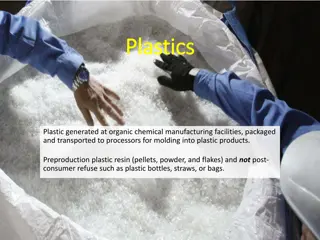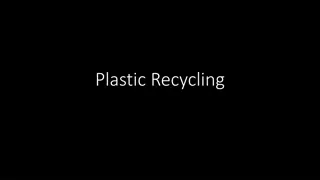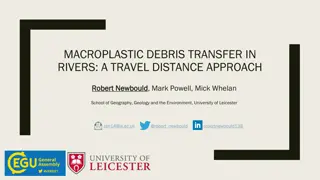Mucogingival Surgery and Perio-Plastic Procedures Overview
The article discusses mucogingival surgery and perio-plastic procedures, focusing on issues like aberrant frenum, inadequate attached gingiva, and shallow vestibule. It explores the importance of these surgical interventions in addressing gingival inflammation, recession, and other mucogingival problems. The history, techniques, and outcomes of mucogingival surgery are detailed, highlighting the significance of enhancing vestibular depth and creating a wider zone of attached gingiva. Additionally, the World Workshop in Periodontics' definitions of mucogingival therapy and periodontal plastic surgery are explained, emphasizing the non-surgical and surgical correction of soft tissue and bone defects related to the gingiva and mucosa.
Download Presentation

Please find below an Image/Link to download the presentation.
The content on the website is provided AS IS for your information and personal use only. It may not be sold, licensed, or shared on other websites without obtaining consent from the author.If you encounter any issues during the download, it is possible that the publisher has removed the file from their server.
You are allowed to download the files provided on this website for personal or commercial use, subject to the condition that they are used lawfully. All files are the property of their respective owners.
The content on the website is provided AS IS for your information and personal use only. It may not be sold, licensed, or shared on other websites without obtaining consent from the author.
E N D
Presentation Transcript
Mucogingival Surgery & Perio-Plastic Procedures ITS DENTAL COLLEGE,HOSPITAL AND RESEARCH CENTRE,GREATER NOIDA
CONTENTS Introduction Aberrant frenum Inadequacy of attached gingiva Inadequate/ shallow depth of vestibule Mucogingival surgery/ Perioplastic Surgery Conclusion
INTRODUCTION The mucogingival complex consists of free and attached gingiva, mucogingival junction (MGJ) and the alveolar mucosa . A mucogingival problem is defined as the presence of gingival inflammation and gingival recession in areas with little or no attached gingiva The consequences of mucogingival problems could be, Pocket formations: due to a close disruption of the complex. Gingival clefts and gingival recession 1. 2.
Goldman 1 was the first to point out the limitations of mucogingival topography upon periodontal surgery. Goldman1emphasized particularly that SHALLOW VESTIBULE leads to food impaction against the gingival margin and into the interproximal spaces, difficult for the patient to place the toothbrush properly and cleanse the area. Therefore, the concept of mucogingival surgery encompassed two intimately associated aims, the alteration of vestibul r fornix depth and the production of a new and wider zone of attached gingiva
MUCOGINGIVAL SURGERY Term was initially introduced by Friedman2(1957) Surgical procedures for correction of relationships between gingiva and oral mucous membrane with reference to three specific problem areas: Attached gingiva, Shallow vestibule, and Frenum interfering with marginal gingiva 1. 2. 3.
MUCOGINGIVAL THERAPY (1996 World Workshop in Periodontics ) SURGICAL PROCEDURES Periodontal plastic surgery NON-SURGICAL PROCEDURES Papilla reconstruction by means of Orthodontic or Restorative therapy.
The Consensus Report from 1996 World Workshop in Periodontics defines Mucogingival Therapy as non-surgical and surgical correction of defects in morphology, position, and/or amount of soft tissue and underlying bone & Periodontal Plastic Surgery as surgical procedures performed to prevent or correct Anatomical, Developmental, Traumatical, or Plaque disease-induced defects of the gingiva, alveolar mucosa, or bone.
Mucogingival surgery (Friedman) Goldman and Cohen TISSUE BARRIER CONCEPT for mucogingival surgery. Dense collagenous band of connective tissue retards or obstructs the spread of inflammation better than does the loose fiber arrangement of the alveolar mucosa. They recommended increasing the zone of keratinized attached tissue to achieve an adequate tissue barrier, Periodontal plastic surgery3 Term originally by Preston D.Miller (1993) 1996 World Workshop in Periodontics renamed mucogingival surgery as periodontal plastic surgery
Mucogingival deformity Surgery indicated vestibular deepening 1. Shallow vestibule frenectomy 2. Aberrant frenum soft tissue grafting 3. Marginal tissue recession 4. Excessive gingival display crown lengthening 5. Deficient ridges ridge augmentation 6. Ridge collapse following extraction of periodontally involved teeth grafting extraction sites 7. Loss of interdental papillae papilla reconstruction 8. Unerupted teeth requiring orthodontic movement surgical exposure 9. Aesthetic defects around dental implants bone and or soft tissue augmentation
Definition There are several frena that are usually present in a normal oral cavity, most notably the maxillary labial frenum, the mandibular labial frenum, and the lingual frenum. 1. 2. 3. A frenum is a mucous membrane fold which contains muscle and connective tissue fibres that attach the lip and the cheek to the alveolar mucosa, the gingiva and the underlying periosteum.4
Median Maxillary Labial Frenum (MMLF) The MMLF is a posteruptivem remnant of the tectolabial bands.4,5 Histologically, the MMLF consists of a stratified squamous epithelium that covers highly vascular, loose fibrous connective tissue, abundance of elastic fibers.4-6 As the primary teeth erupt, the height in the alveolar structures increases normally and the attachment of the frenum moves superiorly with the maxillary alveolar crest
Classification... Depending upon the extension of attachment of frena have been classified as by Placek et al (1974)8. 1. Mucosal when the frenal fibres are attached up to the mucogingival junction. 2. Gingival when the fibres are inserted within the attached gingiva. 3. Papillary when the fibres extending into the interdental papilla. 4. Papilla penetrating when the frenal fibres cross the alveolar process and extend up to the palatine papilla.
SOME OTHER VARIATIONS Simple frenum with appendix Simple frenum with a nodule Simple frenum with nichum Wider frenal attachment
Aberrant frenum(pathogenic frenum)/ Indications of frenectomy or frenotomy An aberrant frenal attachment is present, which causes a midline diastema. 1.
The current consensus among clinicians the diastema needs to be corrected initially with orthodontic treatment and subsequent retention, (Fig ). Soft tissue surgery should be initiated only after the diastema has been closed. This is necessary to avoid possible postoperative scar tissue that may interfere with orthodontic treatment.
2. A flattened papilla with the frenum closely attached to the gingival margin is present, which causes a gingival recession and a hindrance in maintaining the oral hygiene. 3. An aberrant frenum with an inadequately attached gingiva and a shallow vestibule is seen.
Diagnosis Tension test : Kopczyk RA(1974)15 The abnormal frena are detected visually by applying tension over the frenum to see the movement of the papillary tip or the blanch which is produced due to ischemia in the region. PULL SYNDROME Detaching movement of marginal gingiva transferred from lip by frenum
Treatment The aberrant frena can be treated by frenectomy or by frenotomy procedures. Frenectomy is the complete removal of the frenum, including its attachment to the underlying bone. Frenotomy is the incision and the relocation of the frenal attachment.3 The techniques which were employed were: Conventional (Classical) frenectomy Miller s technique V-Y Plasty Z Plasty Frenectomy which was done by using electrocautery
GINGIVA.. The gingiva is that part of oral mucous membrane attached to the teeth and alveolar process of the jaws and surrounds neck of the teeth It consists of three parts:- Attached gingiva Interdental gingiva Marginal gingiva 1) 2) 3)
ATTACHED GINGIVA According to glossary of periodontal term (1972) Attached gingiva is that portion of gingiva that extends from the base of gingival crevice to mucogingival junction.
IMPORTANCE OF ATTACHED GINGIVA It bears the masticatory forces. 1. Withstand forces of toothbrushing 2. It acts as a brace prevents movement of mobile tissues 3. (marginal gingiva and alveolar mucosa) Its firm attachment to the underlying periosteum : Prevents displacement of marginal gingiva away from tooth which may expose the root surface and Leave it vulnerable to action of external stimuli may cause root sensitivity. 4. a. b.
MEASUREMENT OF WIDTH OF ATTACHED GINGIVA HALL11 said that the width of attached gingiva is determined by subtracting the sulcus or pocket depth from total width of gingiva Methods to determine mucogingival junction: 1. Visual method. 2. Functional method. 3. Visual methods after histochemistry staining.
Methods of measuring width of attcahed gingiva and checking its adequacy 1. VISUAL METHOD:-the amount of attached gingiva is generally considered to be insufficient when streching of the lip or cheek induces movement of the free gingival margin (TENSION TEST). TENSION TEST
2. HISTOCHEMICAL STAINING painting of oral mucosa with schiller s potassium iodide which stains nonkeratinized area. IODINE TEST USING SCHILLER S OR LUGOL S SOLUTION
3. Bowers' method Clinical method:- Step1:-measure the probing depth (from gingival margin to base of the sulcus. Step2:-measure the total width of gingiva from gingival margin to mucogingival line Step3:-calculate the width of attached gingiva by subtracting the probing depth from total width of the gingiva 1. 2. MEASURING DEPTH OF THE POCKET 3. (Total gingival width-pocket depth=width of attached gingiva) MEASURING TOTAL WIDTH OF ATTACHED GINGIVA
4. ROLL TEST:- It is done by pushing the adjacent mucosa coronally with a dull instrument to demarcate mucogingival line. If the gingiva moves with the instrument then width of attached gingiva is considered inadequate. ROLL TEST
INADEQUATE WIDTH OF ATTACHED GINGIVA: Friedman stated that inadequate zone of gingiva would facilitate movability of the Marginal tissue. People without sufficient attached gingiva, resulting in the muscles in alveolar mucosa to pull the gingiva down. Gingival recession as well as bone loss is seen. Abnormal frenal attachment, which exaggerates the pull on gingival margin. 1. 2.
VESTIBULE The mouth, consists of two regions, the vestibule and the oral cavity proper. The vestibule is the area between the teeth, lips and cheeks. The oral cavity is bounded at the sides and in front by the alveolar process (containing the teeth) and at the back by the isthmus of the fauces
Vestibule (vestibulum oris) https://classconnection.s3.amazonaws.com/287/flashcards/1274287/png/untitled1343699882737.png bounded : externally by the lips and cheeks internally by the gums and teeth. It communicates with the surface of the body by the orifice of the mouth. Above and below, it is limited by the reflection of the mucous membrane from the lips and cheeks to the gum covering the upper and lower alveolar arch respectively.
Depth of Vestibular Fornix The depth of the vestibule fornix has been defined in two ways: the upper limit of the vestibule either being taken as the crest of the lip ,or the coronal margin of the attached gingiva; the lower limit of the vestibule being the mucobuccal fold. The depth of fornix measured from the crest of the Lip to the mucobuccal fold varied from a maximum of 29 mm to a minimum of 10 mm.
1. FREE GINGIVAL AUTOGRAFT Described by MILLER Step1:- ROOT PLANING- Step2- PREPARE THE RECIPIENT SITE Step3- OBTAIN GRAFT FROM DONOR SITE Proper thickness of graft of about 1-1.5mm is necessary for graft survival. Step 4- TRANSFER & IMMOBILIZE THE GRAFT Step 5- PROTECT THE DONOR SITE
Healing takes 10.5wks for 0.75mm graft & 16 wks for 1.75mm graft. COLOR - As the graft vessels are empty so graft is pale that changes to grayish white during 2 days. CONSISTENCY -Plasmatic circulation accumulates and causes softening & swelling of graft which reduces as new blood vessels form. Functional integration occurs by 17th day but the tissue is mophologically distinct for months. After 24 weeks graft shrinks 25% when placed on denuded bone & 50% when placed on periosteum.
2.PEDICLE AUTOGRAFT LATERALLY (HORIZONTALLY) DISPLACED FLAPS- Described by GRUPE & WARREN- STEPS- STEP 1- PREPARE THE RECIPIENT BED- STEP 2- PREPARE THE FLAP STEP 3- TRANSFER THE FLAP STEP 4- PROTECT THE FLAP & DONOR SITE
CORONALLY DISPLACE FLAP- STEP 1- Two vertical incisons beyond mucogingival junction. Elevate flap STEP 2- Scale & root plane tooth suface. STEP3- return flap & suture it.
3. SUBEPITHELIAL CONNECTIVE TISSUE GRAFT ( LANGER) Indicated for multiple defects with good vestibular depth and gingival thickness. STEPS- STEP 1- 2 horizontal incison & two vertical incisons extending 1 -2 mm away from gingival margin. Extend the flap to mucobuccal fold. STEP 2- Scale & root planing STEP 3- Obtain connective tissue graft from palate. STEP 4- Place connective tissue on denuded root surface & suture it. STEP 5- Cover the graft with partial thickness flap & suture it interdentally
bibliography Goldman, H. M., PERIODONTIA. Ed. J, St.Louis, 1953, C. V. Mosby Co., pp. 552-561 Friedman N. Mucogingival surgery. Tex Dent J 1957;75:358-362 Consensus report on mucogingival therapy. Ann Periodontol 1996;1:702-706 Dewel BF. The normal and the abnormal labial frenum: clinical differentiation. J Am Dent Assoc. 1946;33:318- 329. Henry SW, Levin MP, Tsaknis PJ. Histologic features of superior labial frenum. J Periodontol. 1976;47(1):25-28. Bhaskar SN, ed. Orban s Oral Histology and Embryology.11th ed. St. Louis, MO: Mosby Year Book; 1991:301. Sewerin I. Prevalence of variations and anomalies of the upper labial frenum. Acta Odontol Scand. 1971; 29(4):487-496 Mirko P, Miroslav S, Lubor M. Significance of the labial frenum attachment in periodontal disease in man. Part I. Classification and epidemiology of the labial frenum attachment. J Periodontol 1974;45:891-4. Angle EH: Treatment of malocclusion of the teeth, 7th Ed. Philadelphia: SS White Co, 1907. Tait CN: The median fraenum of the upper lip and its influence on the spacing of the upper central incisor teeth. NewZealand Dent J 20:5-21, 47-65, 1929. Ceremello PJ: The superior labial frenum and the midline diastema and their relation to growth and development ofthe oral structures. Am J Orthodont 39:120-39, 1933. Aa Bb Friedman N, Levine HL: Mucogingival surgery. JPeriodontol 35:5-21, 1964 Kopczyk RA, Saxe SR. Clinical signs of gingival inadequacy: the tension test.ASDC J Dent Child.1974;41(5):352-5 1. 2. 3. 4. 5. 6. 7. 8. 9. 10. 11. 12. 13. 14. 15.
16. Ainamo J, Loe H: Anatomical characteristics of gingiva. A Clinical and microscopic study of the free and attached Gingiva. J Periodontol 1996; 37:5.


